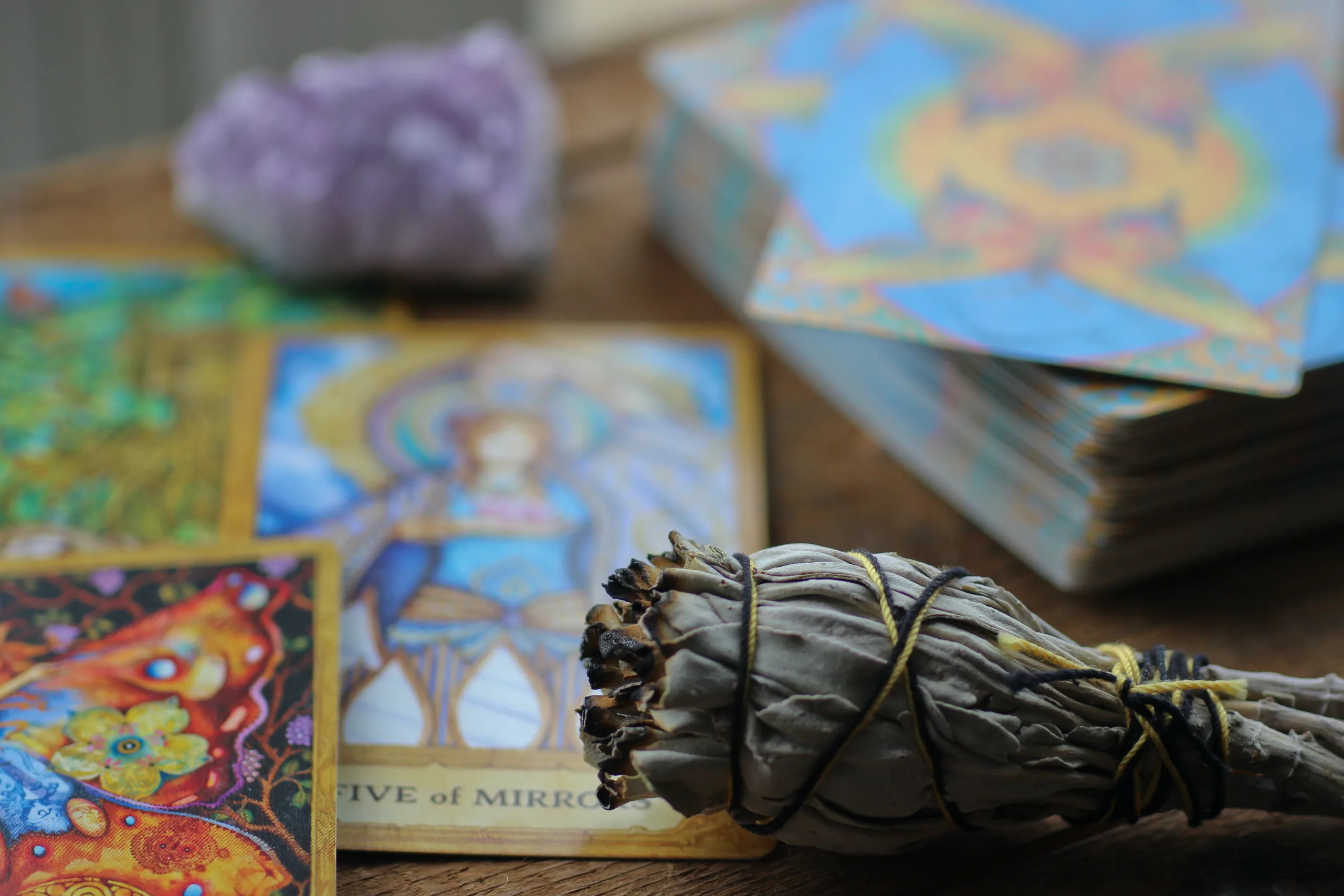What Does Upright and Reversed Mean in Tarot?
The mysterious art of tarot card reading unveils many facets of an individual’s life. One intriguing aspect is that of "upright" and "reversed" interpretations. Herein, we delve into the significance and interpretation of these terms in the context of tarot reading.
" Image by Kayla Maurais. Source: Unsplash."
Image by Kayla Maurais. Source: Unsplash."
Understanding the Tarot Card Orientations
Tarot cards consist of two primary orientations when drawn from the deck, namely upright and reversed. The upright positioning represents the standard alignment while the reversed is its antithesis—upside down. Both these orientations highly influence the meaning and interpretation of the card in a reading.
Origin of Interpretations in Tarot: Upright and Reversed
The practice of assigning interpretations to tarot cards based on their upright or reversed positions originated from Marseille Tarot, a popular classical tarot practice. It was believed that certain secrets and meanings come to light through the manipulation of card orientation.
Importance of Positioning in Tarot Reading
The positioning of tarot cards activates a whole new layer of information during readings. These alternate interpretations based on upright or reversed cards allow tarot readers to provide a well-rounded plethora of insights about various aspects of an individual’s life and choices.
Delving into Upright Tarot Cards
The Concept of Upright Cards in Tarot
Upright tarot cards are traditionally the positive aspect in a reading. They essentially tap into an individual’s conscious mind, highlighting their known world like feelings and thoughts, actions, ideas, goals, potential future outcomes, etc.
Interpreting the Meanings of Upright Tarot Cards
Interpreting upright cards mostly yield positive, strong-willed, and constructive conclusions. However, this doesn’t mean that they’re always favorable. The nuances depend heavily on the specific card drawn and its associations within a tarot spread.
Example Analysis: Common Upright Tarot Cards and Their Meanings
Some examples of common upright tarot card interpretations include: The Fool (beginning, spontaneity), The Magician (power, resourcefulness), and The High Priestess (intuition, mystery).
Understanding the Reversed Aspect in Tarot
Decoding the Mystery of Reversed Cards
Reversed cards, contrary to upright ones, largely reflect the subconscious insight—things that are yet to manifest into reality. They represent blocked energies, repressed feelings, or outcomes that may be delayed or changed based on the querent’s actions.
Interpreting the Meanings of Reversed Tarot Cards
While a reversed card can sometimes denote negative occurrences, they also indicate an area where a person can grow. They help identify potential obstacles and provide guidance for personal transformation.
Example Analysis: Popular Reversed Tarot Cards and Their Meanings
For instance, The Fool reversed can represent recklessness or fear of change. On the other hand, The High Priestess reversed might point towards secrets or hidden agendas.
The Impact Of Card Orientation In A Reading
Influence of Card Positions on Overall Readings
The card orientation (upright or reversed) in a tarot reading significantly affects the narratives and insight derived from the reading. An accurate understanding of the card’s orientation can provide much depth to a reading, contributing to more precise and enlightening interpretations.
Tips for Effective Reading Based on Card Orientation
Always consider the orientation of cards in context with the other cards drawn in the reading. Use intuition to guide interpretation based on individual circumstances and overarching themes within the spread.
FAQ Section
Q1) What is a reversed card in tarot?
A reversed card in tarot is one that is drawn from the deck upside down. It typically pertains to the subconscious issues or blocks, repressed emotions, and lesser-known aspects of a person’s reality.
Q2) How do upright tarot cards differ when compared to reversed tarots in interpretation?
Upright cards primarily highlight the conscious realm, known feelings, actions, and potential outcomes. In contrast, reversed cards tap into hidden energies, repressed emotions, and subconscious blocks.
Q3) Does the orientation/positioning (upright or reversed) always matter in a tarots reading?
Absolutely! The positioning of a card contributes immensely to its specific interpretation within a reading. It can significantly alter the meaning, the insight offered, and the subsequent advice based on the reading.
Reflecting on The Significance Of Upright And Reversed Positions In A Tarot Practice
Understanding the dual aspects—upright and reversed—of tarot cards is fundamental to precise and insightful readings. They each reveal different dimensions of a person’s life and their relationships with their surroundings. Illuminating these facets allows for more detailed guidance and profound insight into an individual’s life path.